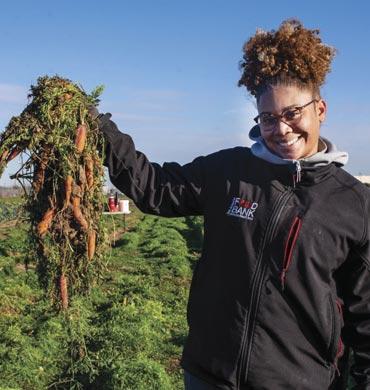
3 minute read
By Michael Guerra, San Antonio Food Bank






San Antonio Food Bank:
A National and International Spotlight During COVID-19 Pandemic
By Michael Guerra, Chief Development Officer, San Antonio Food Bank
The last few years have put the San Antonio Food Bank in the national and international spotlight as it innovated and flexed to meet the humanitarian crisis brought on by the COVID19 pandemic. The Food Bank will be remembered for meeting the emergency food needs of the local community, that for so many were a first-time experience. The images of parking lots filled with cars waiting for food, coupled with heroic volunteers serving alongside Food Bank staff to fill trunks with emergency food, will be forever etched in the minds and hearts of residents. Now, as the Food Bank pivots on the backside of the pandemic, the organization has been able to once again focus less on leading an emergency response and more on getting back to its core work of equitable distribution of nutritious food across a 29-county region of Central and South Texas.
Under CEO Eric Cooper’s leadership, the Food Bank has launched a comprehensive response to food insecurity for the region, a response that leads with food but also highlights education, employment and housing. The framework is titled “Secure San Antonio.” Here is a brief overview of the components. FOOD: This year San Antonio Food Bank will source and redistribute nearly $150,000,000 in food, the majority of which is perishable, healthy food aimed at setting dinner tables for households facing hunger. The Food Bank allocates its food with an equity model that ensures communities that are historically underserved are given priority and their fair share of food.
EDUCATION: Realizing that the way out of poverty is through education and a living wage, the Food Bank has helped place food pantries in all local colleges and universities. In addition, the organization has placed full-time staff at each of the five campuses of the Alamo Colleges District. These staff help students navigate a variety of social needs they might encounter during their studies, and for these students, the biggest barrier to graduation is not flunking out, but rather poverty.
EMPLOYMENT: For nearly two decades, the Food Bank has led job training and placement programs (culinary arts and warehouse





logistics), graduating nearly 100 classes in those years. Building on this past success, the Food Bank strengthened its commitment to helping food insecure households with workforce training by adding a dozen case managers to support those who are undertrained and need work that pays a living wage. The change also added a suite of more than fifty training programs to the two the Food Bank runs in house.
HOUSING: The final component of a Secure SA framework is actually the place where low-income households spend the majority of their income. The Food Bank is strengthening its work across the region with affordable housing partners, sending food on mobile units to apartment complexes to minimize mobility barriers and increase participation. The Food Bank is also building the Apple Seeds Apartments, adjacent to their New Braunfels Food Bank satellite facility. The Apple Seeds Apartments, opening in 2023, will have 50 units and will target families with an adult working in the area who is not currently able to afford housing near their work.
Food remains focal for the Food Bank, but the future of health and equity has meant a pivot to solutions beyond mere food for the organization. More information about these programs and how to get involved can be found at www.safoodbank.org
Michael Guerra is a Chief Development Officer at San Antonio Food Bank
Photographs copyright San Antonio Food Bank.










